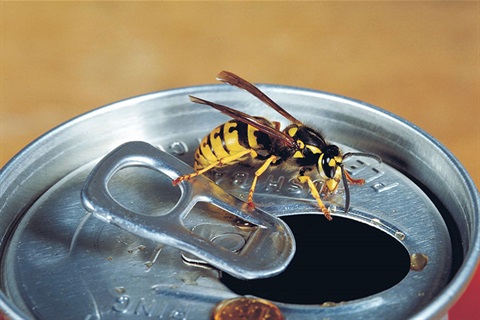European Wasps

The European wasp has progressively spread through our region since first being recorded in Canberra in 1984. It’s renowned for its painful sting, and unlike bees, European wasps are able to sting repeatedly. People can identify a European wasp by its size and colour markings, they have prominent black and yellow stripes with black spots down their abdomen. They are about the same size as a honey bee with yellow legs and long black antennae.
Nests are always concealed and are often found under ground in the soil or above the ground in rockeries, wall or roof cavities and tree stumps. You should NEVER attempt to treat the wasps themselves, as the nests can be home to many thousands of wasps, which are fiercely protective of their nest. European wasps are attracted to water, sweet drinks, and food. Covering the food will reduce the risk of being stung. It is important not to leave cans of drink open and unattended, as a wasp may get in and sting the mouth or throat when people have a drink.
If stung, the recommended first aid for a wasp sting is an ice pack to reduce that pain and swelling. However, if someone is stung in the mouth, experience difficulty in breathing, or develop an itchy rash, seek medical help immediately.
If you find a European wasp nest on public property, please contact us to report it. For nests on private property contact your local pest controller for assistance.